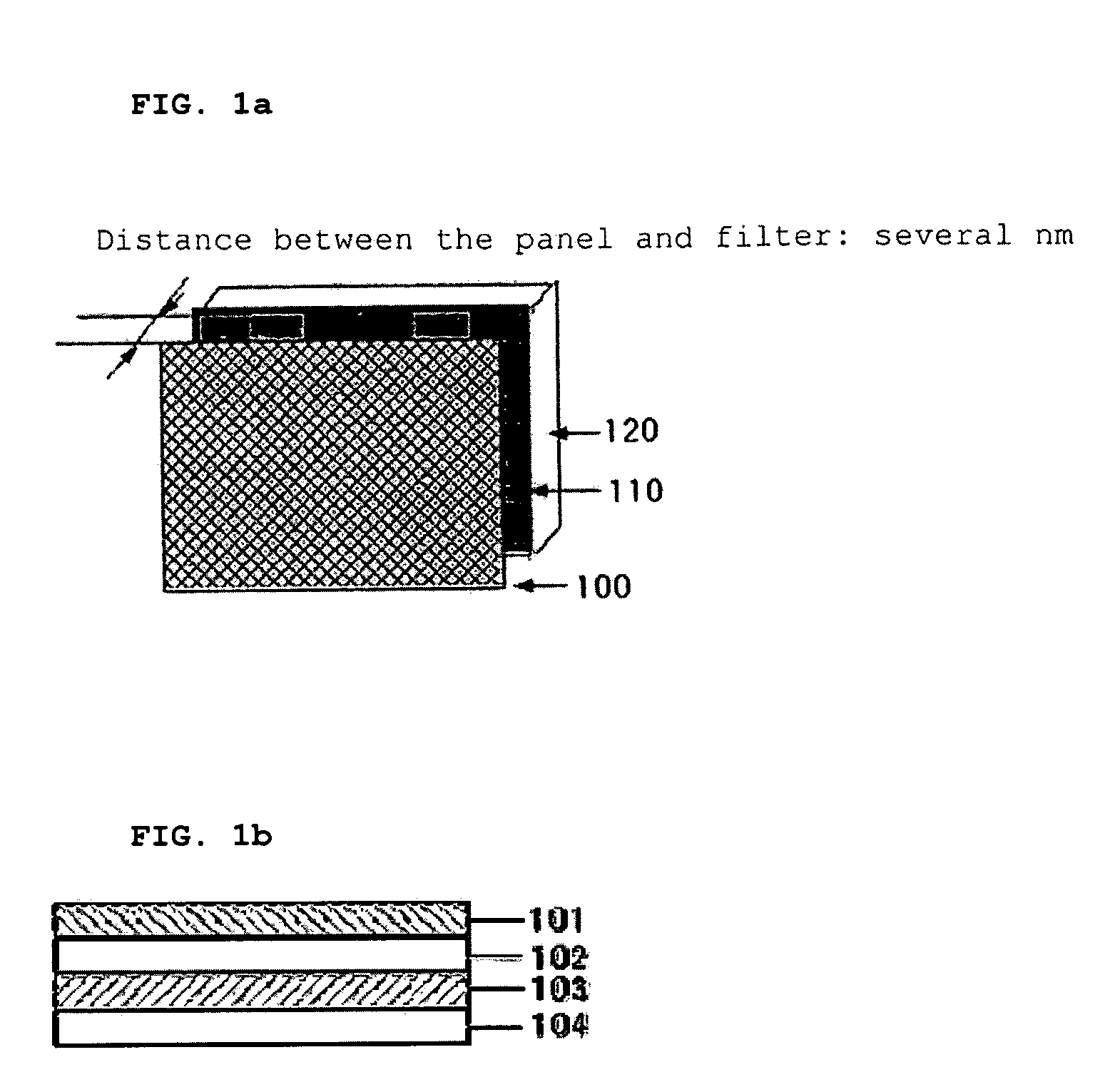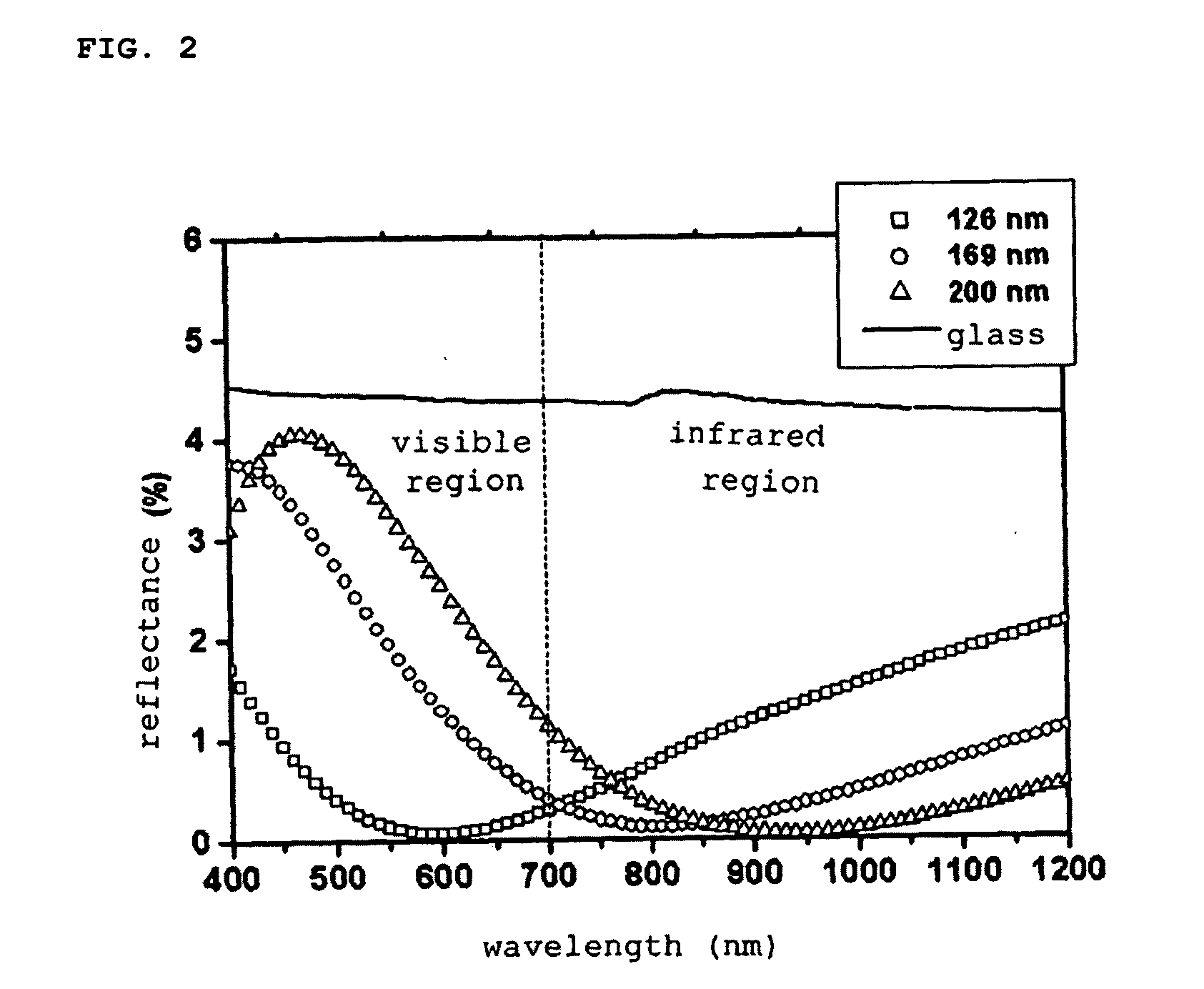Nanoporous antireflection thin film and method of producing the same using block copolymers
a technology of antireflection and thin film, which is applied in the field of producing an antireflection thin film, can solve the problems of difficulty in handling and high cost of fluorinated polymers used in the method
- Summary
- Abstract
- Description
- Claims
- Application Information
AI Technical Summary
Problems solved by technology
Method used
Image
Examples
examples
[0040]Polystyrene-block-poly(methylmethacrylate) copolymer (PS-b-PMMA), purchased from Polymer Source Inc. (Lot No. P2406-SMMA), was synthesized by using anionic polymerization. The total number-average molecular weight (Mn), the polydispersity, and the weight fraction of the PMMA block in the block copolymer were 94,200, 1.15 and 0.72, respectively. To convert the weight fraction to the volume, the mass density was set to PS (1.05 g / cm3) and PMMA (1.18 g / cm3). Thus, the volume fraction of PMMA block (fPMMA) in the block copolymer was 0.69. This block copolymer exhibited PS cylindrical microdomains when annealed at 170° C. for 48 hours.
[0041]Glass slide, purchased from Corning Glass Works (Product #2947), which was soda lime glass which has the refractive index of 1.52, was spin-coated with PS-b-PMMA in toluene (2 to 3% by weight) with a rotating speed of 2,000 to 4,000 rpm. The coated film was irradiated with an ultraviolet lamp with a maximum intensity at 253 nm for 1 hour in a va...
PUM
| Property | Measurement | Unit |
|---|---|---|
| Pore size | aaaaa | aaaaa |
| Refraction | aaaaa | aaaaa |
| Volume ratio | aaaaa | aaaaa |
Abstract
Description
Claims
Application Information
 Login to View More
Login to View More - R&D
- Intellectual Property
- Life Sciences
- Materials
- Tech Scout
- Unparalleled Data Quality
- Higher Quality Content
- 60% Fewer Hallucinations
Browse by: Latest US Patents, China's latest patents, Technical Efficacy Thesaurus, Application Domain, Technology Topic, Popular Technical Reports.
© 2025 PatSnap. All rights reserved.Legal|Privacy policy|Modern Slavery Act Transparency Statement|Sitemap|About US| Contact US: help@patsnap.com



